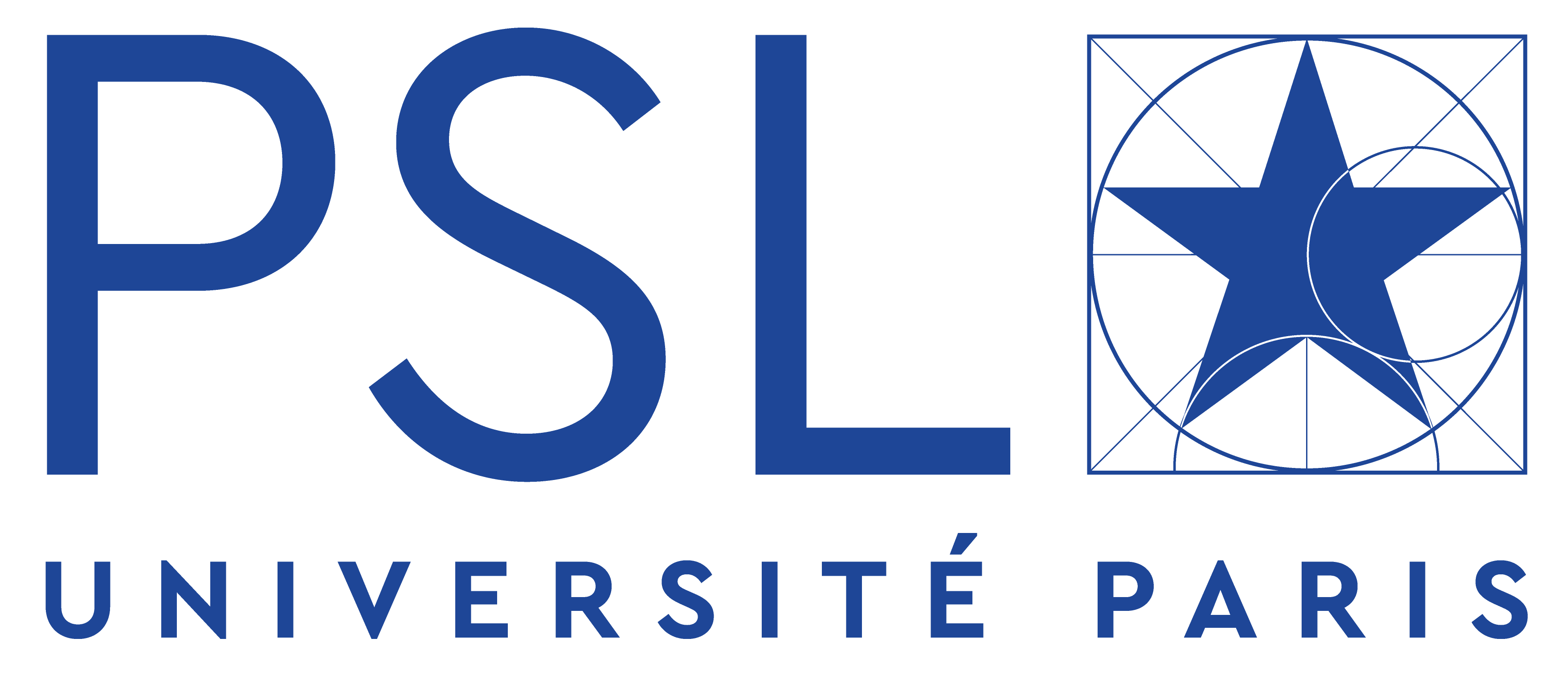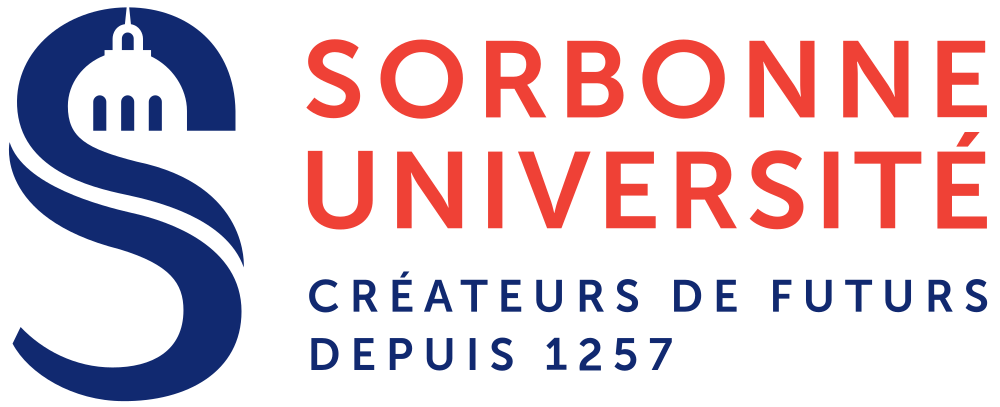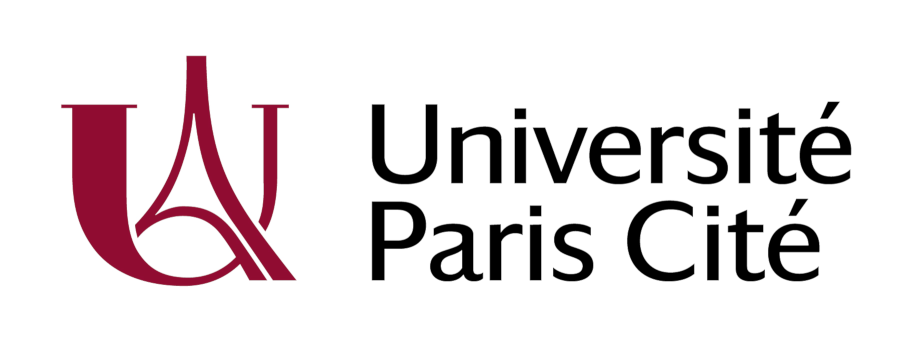Multi-element imaging
UNDER CONSTRUCTION!!!
The expertise of Langevin Institute in multi-element techniques started in acoustics, , with the invention of ultrasonic time reversal mirrors. Today, it has been broadened to various multi-element technologies: microphones or piezoelectric transducers arrays, microwave antenna arrays, CCD sensor networks, spatial light modulators. Developments in multi-element methods are continuing, in particular around matrix filtering techniques, the compress sensing methods or the extraction of Green functions by noise correlation. We also adapt conventional beamforming methods for new applications in dynamic acoustical imaging.
Imaging with the array response matrix
- "Ultrasonic Imaging in Highly Attenuating Materials With Hadamard Codes and the Decomposition of the Time Reversal Operator", E. Lopez Villaverde, S. Robert, and C. Prada, IEEE Trans. on UFFC, (2017)
- "Ultrasonic imaging of defects in coarse-grained steels with the decomposition of the time reversal operator", EL Villaverde, S Robert, C Prada, J. Acoust. Soc. Am 140 (1), 541-550, (2016).
- "Evaluation of a multiple scattering filter to enhance defect detection in heterogeneous media". Shahjahan, S., F. Rupin, A. Aubry, and A. Derode, J. Acoust. Soc. Am 141, 624–640 no. 1 (2017).
- "Effect of microstructural elongation on backscattered field: Intensity measurement and multiple scattering estimation with a linear transducer array", Baelde A, Laurent J, & al., Ultrasonics (2018).
- "Measurement of dispersion curves of circumferential quided waves radiating from curved shells: Theory and numerical validation" M. Chekroun, J.-G. Minonzio, C. Prada, P. Laugier, and Q. Grimal,J. Acoust. Soc. Am. 139 (2), 790-799, (2016)
Imaging with fewer sensors
Compressed Sensing :
- "A Blind Dereverberation Method for Narrowband Source Localization", Chardon, G., T. Nowakowski, J. De Rosny, and L. Daudet, Ieee Journal Of Selected Topics In Signal Processing 9, 815-824 (2015).
- "Intensity-only measurement of partially uncontrollable transmission matrix: demonstration with wave-field shaping in a microwave cavity", Del Hougne, P., B. Rajaei, L. Daudet, and G. Lerosey, Optics Express 24, 18631-18641 (2016).
- "Imaging with nature: compressive imaging using a multiply scattering medium", Liutkus, A., D. Martina, S. Popoff, G. Chardon, O. Katz, G. Lerosey, S. Gigan, L. Daudet, and I. Carron.Scientific reports 4, 5552 (2014).
Mono transducer imaging device: The elastic wave that propagates in a leaky reverberant cavity should radiate in the air. We had already shown how to exploit this radiation to learn to focus a pulse at any point of a medium of interest from a single transducer coupled to the cavity. This transforms the single sensor into a virtual network of sensors whose aperture is determined by the exit surface of the cavity.
We have shown how to increase the efficiency of focusing by increasing the density of modes in the plate and show how to optimize the acoustic impedance of the plate to promote a better coupling with the air.
- N. Etaix, J. Dubois, M. Fink and R. K. Ing , "Increasing the modal density in plates for mono-element focusing in air", J. Acoust. Soc. Am., Vol. 134 (2), pp. 1049-1054,2013.
- J. Dubois and R. K. Ing. Effective thickness and eigenmodes of a plate with blind holes. Proceedings of Acoustics 2013, New Delhi, India, November 10-15, 2013.
Dynamical acoustical imaging applications
Low frequency displacements monitoring : We have developed an airborne ultrasound sonar that functions as a contactless stethoscope. In collaboration with Professor T. Similowski of the Pitié Salpêtrière Hospital, we have shown that it allows, at a distance (typically at 1m50 from the patient), the monitoring of respiration. By offering an alternative to the spirometer, which is an intrusive device, this system could thus answer an important problem in respiratory neurophysiology. The sensitivity of the technique is such that the heartbeat can also be measured. This contactless imager is now designed for the observation of ventilation and heartbeat in the chest and abdomen for diagnostic assistance.
In parallel, we have shown that the same type of device is capable of remotely recording the low frequency movements induced on the surface of the human body under transient vibrations. Like transient elastography methods developed within the Langevin Institute, it is thus possible to measure the hardness on the surface of the human body to detect a rigid object hidden under a garment or under the skin. This imager, which gave rise to the filing of a patent, meets a security objective
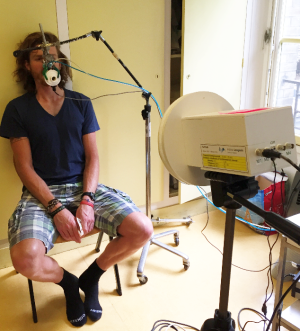
Ultrasonic and non-contact measurement of the breathing of a subject placed at a distance of 1.50m from the probe.
- "Non contact ultrasound stethoscope", N. Jeger, M. Fink and R. K. Ing, J. Acoust. Soc. Am. 136, 2282 (2014).
- "Can human breathing be measured under true ecological conditions." M-C. Niérat, P. Laveneziana, B-P. Dubé, R. K. Ing, T. Similowski, ERS International Congress 2016, London, 3-7 September, 2016.
- "Non-contact and through-clothing measurement of the heart rate using ultrasound vibrocardiography", N. Jeger-Madiot, J. Gateau , M. Fink , R.-K. Ing, Medical Engineering and Physics 1–7 (2017) .
- A comparative study on the contour tracking algorithms in ultrasound tongue images with automatic reinitialization, Xu, K., T.G. Csapo, P. Roussel, and B. Denby, J. Acoust. Soc. Am. 139, EL154-EL160 (2016)
- 3D tongue motion visualization based on ultrasound image sequences, K. Xu, Y. Yang, A. Jaumard-Hakoun, M. Adda-Decker, A. Amelot, S. K. Al Kork, L. Crevier-Buchman, P. Chawah, G. Dreyfus, T. Fux, C. Pillot-Loiseau, P. Roussel, M. Stone, B. Denby, Interspeech2014 (2014).
Localization of flying bats : In the context of source localization with a limited number of sensors, a collaboration with the Museum of Natural History (ISYEB UMR 7205) began in 2012. The objective was to locate in real time flying bats thanks to their echolocation cries. To this end, we developed a 4-microphone antenna coupled to real-time signal analysis software. This easily portable device was deployed during a mission in 2013 in the Democratic Republic of Congo. It allowed us to characterize the ecology and acoustic parameters of a particularly endangered and emblematic species, the bat panda. The discovery of a new species of Glauconycteris has also been made possible.
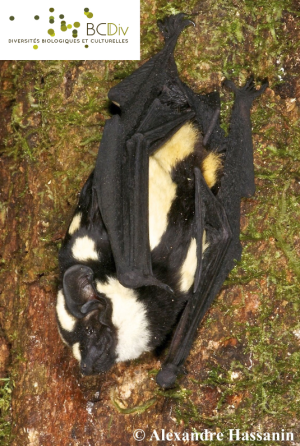
Glauconycteris Superba collected at the Mbyie site in the Democratic Republic of Congo.
- Multilocus phylogeny and species delimitation within the genus Glauconycteris (Chiroptera, Vespertilionidae), with the description of a new bat species from the Tshopo province of the Democratic Republic of the Congo. A. Hassanin, R. Colombo,G.-C. Gembu, M. Merle, V. Tu, T. Gorfol, P. Musaba Akawa, G. Csorba, T. Kearney, A. Monadjem, R. K. Ing, J Zool Syst Evol Res. 2017;1–22.
- Echolocation calls and flight behaviour of the elusive pied butterfly bat (Glauconycteris superba), and new data on its morphology and ecology, R. K. Ing, R. Colombo, G.-C. Gembu, Y. Bas, J.-F. Julien, Y. Gager and A. Hassanin, Acta Chiropterologica, 18(2): 477–488, (2016).



